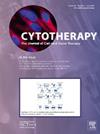利用人工智能改善细胞治疗检测:细胞在基质上的自动定量图像分析
IF 3.7
3区 医学
Q2 BIOTECHNOLOGY & APPLIED MICROBIOLOGY
引用次数: 0
摘要
背景,随着细胞治疗领域的不断发展,细胞与定向递送方法(如三维支架、细胞打印等)的结合也在不断发展。这些技术需要精确确定细胞数量和生存能力的方法,以增强工艺优化和开发适当的释放测试。目前的方法动态范围有限,需要大量的人工努力才能产生结果。在这里,我们描述了一个简单的荧光成像为基础的方法来计数活细胞和死细胞在支架培养是一致的,自动化的,定量的。首先,我们优化了实验室软件,以支持和控制提供均匀成像场的样品,并采用标准方法测定细胞数(Hoechst 33342)和活力(碘化啶)。然后,我们在一系列细胞浓度范围内使用传统的非动态图像定量软件(Gen5, Winooski, VT),并将其与训练有素的人工智能软件(Aiforia,赫尔辛基,芬兰)的能力进行比较,以确定图像分析中的细胞计数和细胞活力。使用Aiforia,活细胞计数与播种浓度高度相关(p=0.0007;r2=0.96),而Gen5没有相关性(p=0.6;r2 = 0.09)。两种方法测得的死亡细胞数相互相关(p=0.004;r2=0.90),表明两种系统同样能够使用基于碘化丙啶的检测。结果在完成对人工智能系统的适当训练后,它在高度动态背景下识别典型支架培养图像中的细胞的能力明显提高了数据准确性。我们相信基于人工智能的方法将显著受益于细胞治疗。本文章由计算机程序翻译,如有差异,请以英文原文为准。
Using Artificial Intelligence to Improve Cell Therapy Assays: Automated Quantitative Image Analysis of Cells on Matrices
Background & Aim
As the field of cell therapy continues to advance, the combination of cells and directed delivery methods (such as three-dimensional scaffolds, cell printing etc.) continues to grow. These technologies require methods to accurately determine cell numbers and viability to enhance process optimization and develop appropriate release tests. Current methods have limited dynamic range and require substantial manual effort to produce results. Here we describe a simple fluorescent imaging-based method for counting live and dead cells in scaffold cultures that is consistent, automated, and quantitative.
Methodology
First, we optimized labware to support and control the samples providing uniform imaging fields with standard methods for cell number (Hoechst 33342) and viability (Propidium Iodide). We then used a traditional, nondynamic image quantitation software (Gen5, Winooski, VT) across a range of cell concentrations and compared it to the ability of a trained artificial intelligence software (Aiforia, Helsinki, Finland) to determine both cell counts and cell viability in image analysis. Using Aiforia, the live cell counts were highly correlative to seeding concentration (p=0.0007; r2=0.96) across all tested ranges whereas Gen5 showed no correlation (p=0.6; r2=0.09). Dead cell counts measured by the two methods were correlated to each other (p=0.004; r2=0.90) indicating that both systems were equally capable using Propidium Iodide based detection.
Results
After completing proper training of the AI system, it provided a clear improvement in data accuracy from its ability to recognize cells amidst highly dynamic backgrounds typical of scaffold culture images.
Conclusion
We believe that cell therapy will significantly benefit from AI based approaches.
求助全文
通过发布文献求助,成功后即可免费获取论文全文。
去求助
来源期刊

Cytotherapy
医学-生物工程与应用微生物
CiteScore
6.30
自引率
4.40%
发文量
683
审稿时长
49 days
期刊介绍:
The journal brings readers the latest developments in the fast moving field of cellular therapy in man. This includes cell therapy for cancer, immune disorders, inherited diseases, tissue repair and regenerative medicine. The journal covers the science, translational development and treatment with variety of cell types including hematopoietic stem cells, immune cells (dendritic cells, NK, cells, T cells, antigen presenting cells) mesenchymal stromal cells, adipose cells, nerve, muscle, vascular and endothelial cells, and induced pluripotential stem cells. We also welcome manuscripts on subcellular derivatives such as exosomes. A specific focus is on translational research that brings cell therapy to the clinic. Cytotherapy publishes original papers, reviews, position papers editorials, commentaries and letters to the editor. We welcome "Protocols in Cytotherapy" bringing standard operating procedure for production specific cell types for clinical use within the reach of the readership.
 求助内容:
求助内容: 应助结果提醒方式:
应助结果提醒方式:


